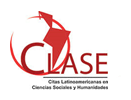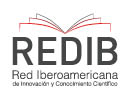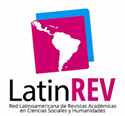Distrust, regimes of truth, conspiracies and assemblages in the context of Covid-19 in Mexico
DOI:
https://doi.org/10.21142/DES-1202-2020-0030Keywords:
Mexico, mood, visual media, fake news, impression managementAbstract
This essay examines the reproduction and circulation of videos, images and memes for the construction of regimes of truth in the Mexican public sphere during the Covid-19 pandemic. Since March 2020, when the circulation of information on infection rates, deaths and spikes in cases began, through digital media and their data verification platforms, relatives of those deceased and hospitalized as a result of Covid-19 have used videos and images on social networks to show and verify what is happening. This accumulation of information, added to memes, generated a mood of distrust in Mexico, in the face of the different versions being shared. Based on visual methodologies, this essay examines how, through different platforms, the image is re-appropriated and recombined with other discursive genres during the Covid-19 pandemic in order to achieve legitimacy and legibility. Amid an abundance of information, the figure of the undersecretary for health, Hugo López-Gatell, a specialist responsible for informing Mexicans regarding the details of the pandemic, figured prominently in efforts to disseminate figures approximating the truth. The image of López-Gatell as an emblem of truth and national sovereignty stood in contrast to the contradictory discourse of the current president, Andrés Manuel López Obrador.
Downloads
References
Bajtín, M. (1989). Teoría y estética de la novela. Trabajos de investigación. Madrid: Taurus.
Boyer, D. (2010). Digital expertise in online journalism (and anthropology). Anthropological Quarterly, Anthropological Perspectives in the Digital Age, 83(1), pp. 73-95. DOI: 10.1353/anq.0.0114
Briggs, C. (2004). Theorizing modernity conspiratorially: science, scale, and the political economy of public discourse in explanations of a cho lera epidemic. American Ethnologist, 31(2), pp. 164-187. DOI: 10.1525/ ae.2004.31.2.164
Carlson, J. y Stewart, K. (2014). The legibilities of mood work. New Forma tions, 82(7), pp. 114-133. DOI: 10.3898/NEWF.82.07.2014
Carrión, L. (2018). La fosa del agua. Desapariciones y feminicidios en el río de los Remedios. Ciudad de México: Penguin Random House.
De Abreu, M. J. (2019). Medium theory; or, «The War of the Worlds» at regular intervals. Current Anthropology, 60(5), s. p. DOI: https://doi. org/10.1086/705345
De la Cadena, M. (2014). El racismo silencioso y la superioridad de los inte lectuales en el Perú. En C. Hünefeldt, M. de la Cadena y C. Méndez, Racismo y etnicidad (pp. 54-97). Lima: Ministerio de Cultura.
Deleuze, G. (1987). El bergsonismo. Madrid: Cátedra y Colección Teorema.
Edwards, J., Harvey, P. y Wade, P. (2010). Technologized images, technologi zed bodies. Nueva York y Oxford: Berghahn books.
Fattal, A. (2014). Hostile remixes on YouTube: A new constraint on pro FARC counterpublics in Colombia. American Ethnologist, 41(2), pp. 320- 335. DOI: 10.1111/amet.12078
Foucault, M. (1979). Microfísica del poder. Madrid: Ediciones La Piqueta.
Gallagher, E. (2017). Mexico: articles about bots & trolls. Medium. Recupe rado de https://medium.com/@erin_gallagher/news-articles-about-bots trolls-in-mexican-networks-7b1e551ef4a6
Goffman, E. (1997). La presentación de la persona en la vida cotidiana. Bue nos Aires: Amorrortu Editores.
Graan, A. (2018). The fake news mills of Macedonia and other liberal panics. Cultural Anthropology. Recuperado de https://culanth.org/fieldsights/the fake-news-mills-of-macedonia-and-other-liberal-panics-1
Habermas, J. (1981). Historia y crítica de la opinión pública. La transforma ción estructural de la vida pública. Barcelona: Gustavo Gili.
Hirschkind, C., De Abreu, M. J. y Caduff, C. (2017). New media, new pu blics? An introduction to supplement. Current Anthropology, 58(15), pp. 3-12. DOI: 10.1086/688903
Johnson, J. (2018). The self-radicalization of white men: «Fake news» and the affective networking of paranoia.
Communication Culture & Critique, 11(1), pp. 100-115. DOI: https://doi.org/10.1093/ccc/tcx014
Koselleck, R. (1993). Futuro pasado: para una semántica de los tiempos his tóricos. Barcelona: Paidós.
Lepselter, S. (2016). The resonance of unseen things poetics, power, captivity, and UFOs in the American Uncanny. Michigan: University of Michigan Press.
Piccato, P. (2015). La tiranía de la opinión. El honor en la construcción de la esfera pública en México. Ciudad de México: El Colegio de Michoacán y El Instituto Mora.
Piccato, P. (2017). A history of infamy. Crime, truth, and justice in Mexico. Oakland: University of California Press.
Reguillo, R. (2011). Lo análogo en el periodismo digital. Letras Libres. Re cuperado de https://www.letraslibres.com/mexico/lo-analogo-en-el-pe riodismo-digital
Reguillo, R. (junio, 2020). Cartografías digitales: metodologías para tiem pos nuevos. Trabajo presentado en el ciclo de videoconferencias Antro pología en confinamiento. Alternativas etnográficas y trabajo de campo du rante la pandemia, organizado por el Centro de Investigaciones y Estudios
Superiores en Antropología Social, CIESAS.
Stewart, K. (2014). Tactile compositions. En P. Harvey, E. C. Casella, G. Evans, H. Knox, C. McLean, E. Silva, N. Thoburn y K. Woodward, K. (Eds.), Objects and Materials (pp. 119-127). Londres: Routledge.
Wiggins, B. (2019). The discursive power of memes in digital culture. Ideology, Semiotics and Intertextuality. Londres: Routledge.
Zamorano, G. (2018). An expected revolution? Visuality, autodefensas, and imaginaries of citizens’ self-protection in Mexico. Anthrovision, 6(2), pp. 1-22. DOI: https://doi.org/10.4000/anthrovision.3861
Zamorano, G. (2020). Efectos de ciudadanía: nuevos archivos digitales y la formación de contrapúblicos e
Downloads
Published
Issue
Section
License

Esta obra está bajo una licencia http://creativecommons.org/licenses/by-nc-sa/4.0/

















